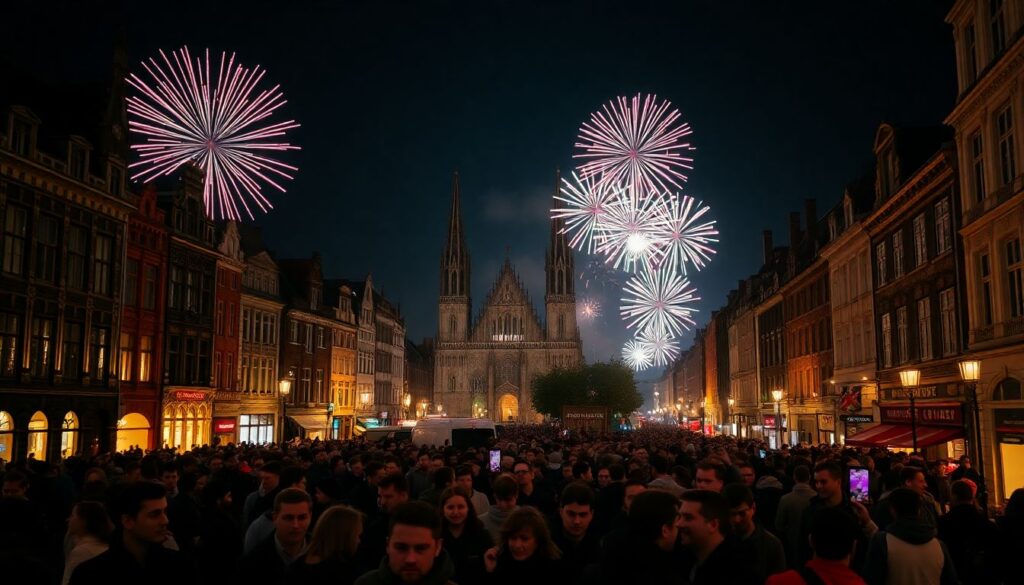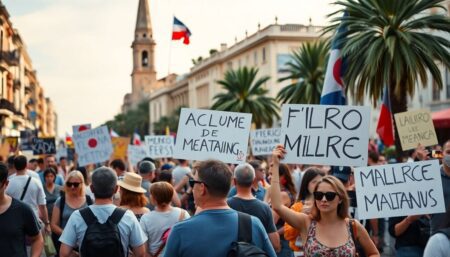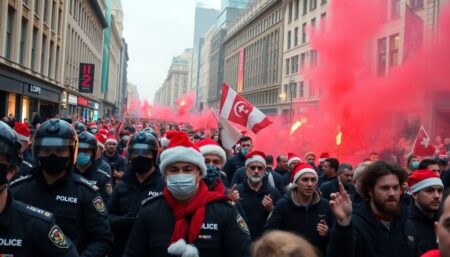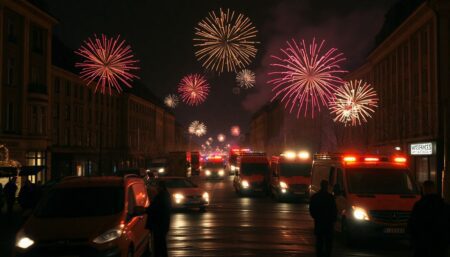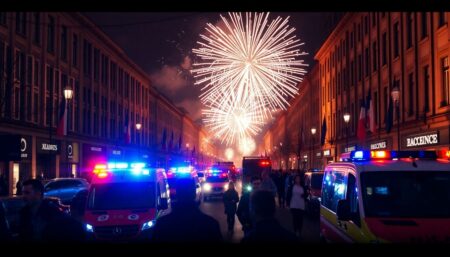Welcome to our latest coverage of the dramatic events unfolding in Brussels on New Year’s Eve. In this article, we’ll delve into the chaos that gripped the city, exploring the impact on residents, the political implications, and the broader context of European affairs.
A night of turmoil and uncertainty in the heart of Europe
Imagine the heart of Europe, Brussels, under the spell of night, not quiet and serene, but pulsating with an energy that’s almost tangible. The city’s grand architecture, bathed in a kaleidoscope of artificial light, serves as a magnificent backdrop for the spectacle unfolding in the streets.
Picture a symphony of color and sound, as fireworks burst into life behind the city’s iconic silhouette, each explosion a dance of light against the dark canvas of the night sky. The crowds below mirror the chaos above, a sea of people ebbing and flowing through the streets, their laughter and cheers a cacophony of joy and excitement.
Yet, amidst this vibrant tableau, there’s a sense of disorientation, a confusion that’s almost palpable. People dart in different directions, some drawn to the spectacle, others retreating from it. The air is thick with smoke and noise, the scent of gunpowder and the hum of a thousand conversations. It’s a scene of sheer pandemonium, yet there’s a peculiar beauty to it, a wild and untamed charm that’s uniquely Brussels.
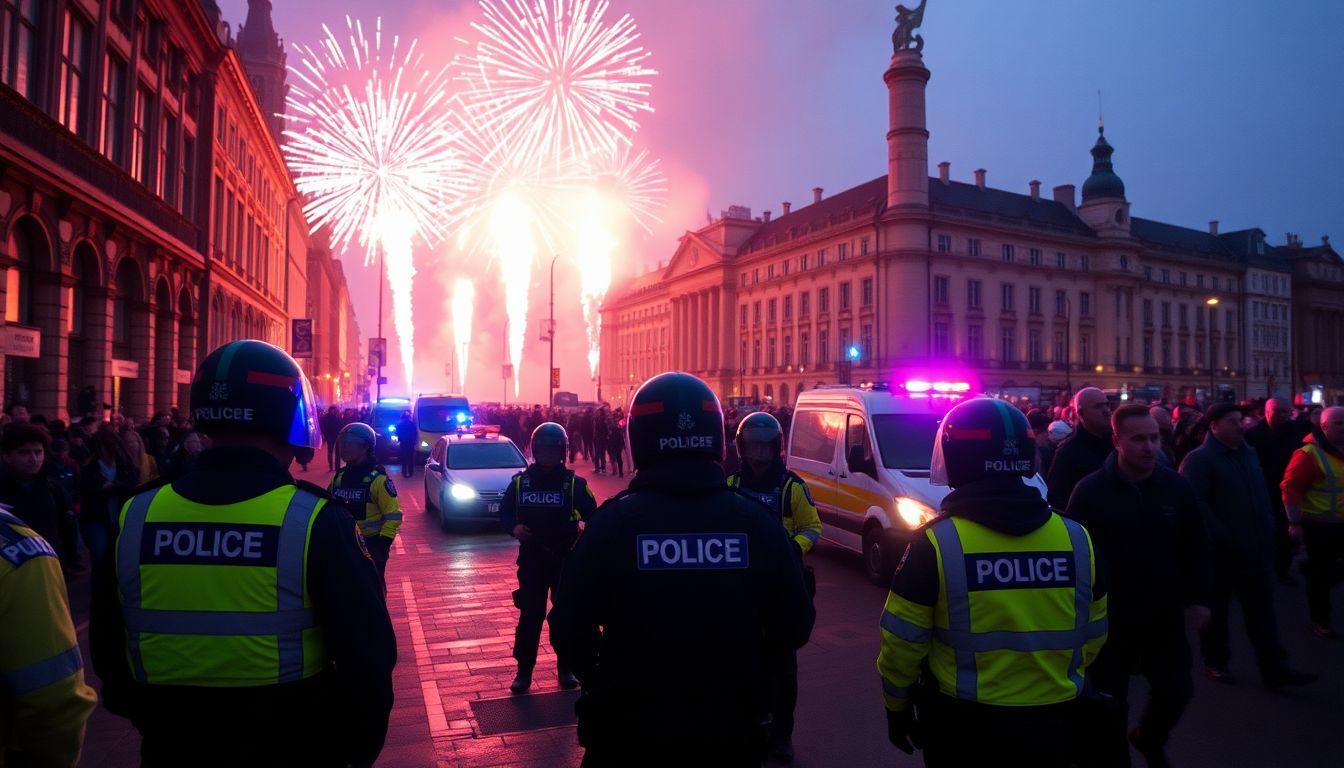
The Unfolding Chaos
As the clock struck midnight on New Year’s Eve, the heart of Europe, Brussels, was thrust into an unprecedented state of chaos. What began as a night of celebration quickly devolved into a series of alarming incidents that left the city reeling. The initial spark of turmoil ignited in the vibrant Place de la Bourse, where a massive crowd had gathered to ring in the new year. Reports of fireworks being launched horizontally into the crowd, rather than vertically into the sky, triggered a wave of panic among the revelers.
The situation rapidly escalated as more reports flooded in, detailing car fires and street fires scattered across various districts of Brussels. The authorities were quick to respond, dispatching police and emergency services to the affected areas. However, the sheer scale and spontaneity of the incidents presented a significant challenge. Social media platforms erupted with eyewitness accounts and videos, painting a picture of a city descending into disorder.
In response to the escalating chaos, Brussels’ law enforcement agencies swiftly implemented measures to regain control. Police units were deployed en masse to the hotspots, aiming to disperse crowds and restore order. The fire department worked tirelessly to extinguish the numerous fires that had been set ablaze. Despite their efforts, the situation remained volatile, with sporadic outbreaks of unrest continuing into the early hours of the morning.
The immediate impact on Brussels’ residents was profound. The city, usually a beacon of European culture and unity, was shrouded in a cloak of unease. Many residents took to social media to express their shock and disbelief at the events unfolding in their beloved city. Local news outlets provided continuous coverage, attempting to keep the public informed as the night wore on. Key areas of the city were temporarily cordoned off, disrupting New Year’s Eve plans and leaving many residents and visitors stranded or forced to alter their routes. The usually bustling streets of Brussels were transformed into a scene of caution and vigilance, as the city grappled with the aftermath of the chaotic night.
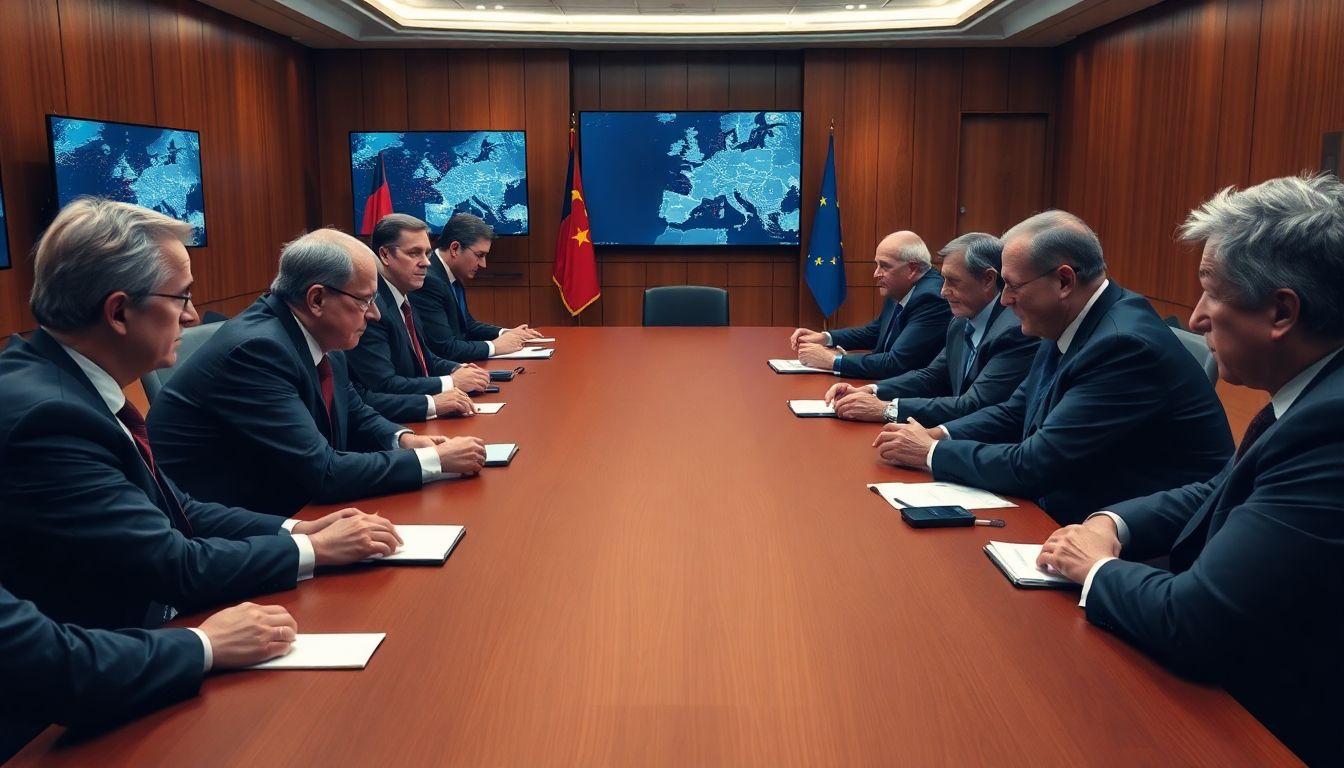
Political Repercussions
The political implications of the chaos in Brussels have sent shockwaves through the European Union, leaving leaders scrambling to address the fallout. The events have exposed deep-seated tensions and fissures within the EU, bringing to the fore long-standing debates about integration, sovereignty, and the future of the bloc. The crisis has raised questions about the EU’s ability to respond effectively to urgent situations, with some leaders calling for greater coordination and unity, while others advocate for more autonomy and control at the national level.
European leaders reacted with a mix of concern, resolve, and discord. French President Emmanuel Macron was quick to call for a stronger, more united Europe, stating that “the chaos in Brussels is a wake-up call for all of us. We must deepen our integration and strengthen our institutions.” In contrast, Hungarian Prime Minister Viktor Orbán saw the events as a validation of his nationalist policies, arguing that “this is what happens when you try to force together what nature has separated.” Meanwhile, German Chancellor Olaf Scholz took a pragmatic approach, urging calm and cooperation among member states.
The potential impact on EU policies is profound. Here are some key areas to watch:
-
Migration Policy:
The chaos may prompt a reevaluation of the EU’s migration policies, with some leaders calling for stricter border controls and others advocating for more humane treatment of migrants.
-
Defense and Security:
There may be an increased focus on bolstering the EU’s defense and security capabilities, including a potential expansion of the PESCO framework.
-
Economic Policy:
The crisis could lead to a reassessment of the EU’s economic policies, with potential changes to fiscal rules and investment priorities.
Several key figures have made statements that highlight the political stakes and divisions. European Commission President Ursula von der Leyen warned that “the events in Brussels should not be used to undermine the European project. We must stand together in the face of adversity.” Conversely, Italian Prime Minister Giorgia Meloni saw the chaos as a symptom of the EU’s structural problems, asserting that “Brussels should focus less on bureaucracy and more on the needs of its citizens.” As the dust settles, one thing is clear: the chaos in Brussels will leave an indelible mark on the political landscape of the EU.
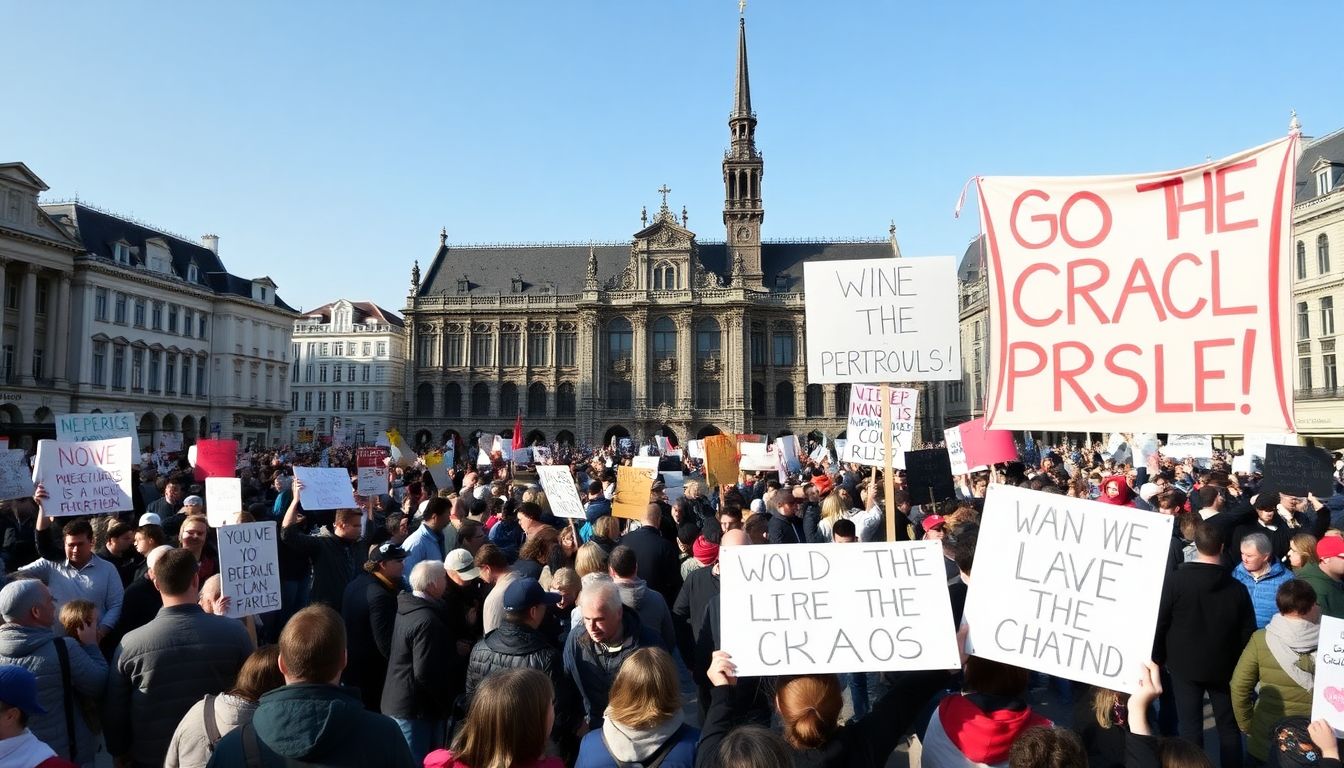
Public Reaction
The events in Brussels sparked a wave of public reaction, with residents expressing a mix of shock, sorrow, and solidarity. Local resident Marie Leclair shared, I never thought something like this could happen in our city. It’s devastating.
The sentiment was echoed on social media, where the hashtag #BrusselsStrong began trending worldwide. Twitter user @BelgianHeart wrote, Today, we are all Belgians. Standing together against fear and hatred.
In the aftermath, public displays of mourning and unity became a common sight. Impromptu memorials sprang up around the city, with flowers, candles, and heartfelt notes lining the streets. We will not let this break us,
said longtime Brussels resident, Paul Van Dyck, Instead, it will make us stronger.
On Instagram, users shared images of Belgian flags and black ribbons, symbolizing their support and condolences.
Concurrently, a call for action resonated through the city. Protests and demonstrations were organized to stand against violence and promote peace. On the steps of the Bourse, hundreds gathered with signs bearing messages like Love will always win
and We are not afraid.
The event was emotionally charged, with participants joined in singing the Belgian national anthem.
Social media platforms became hubs for organizing and sharing information about vigils and protests. A Facebook event titled Together Against Terror
saw thousands marking their attendance. Additionally, artists took to the streets and social media to share poignant illustrations and cartoons, capturing the city’s resilience. Notable was the viral image of the Manneken Pis statue defiantly facing off against terror, with the caption This is Brussels. This is Belgium. This is Europe. We will not be intimidated.
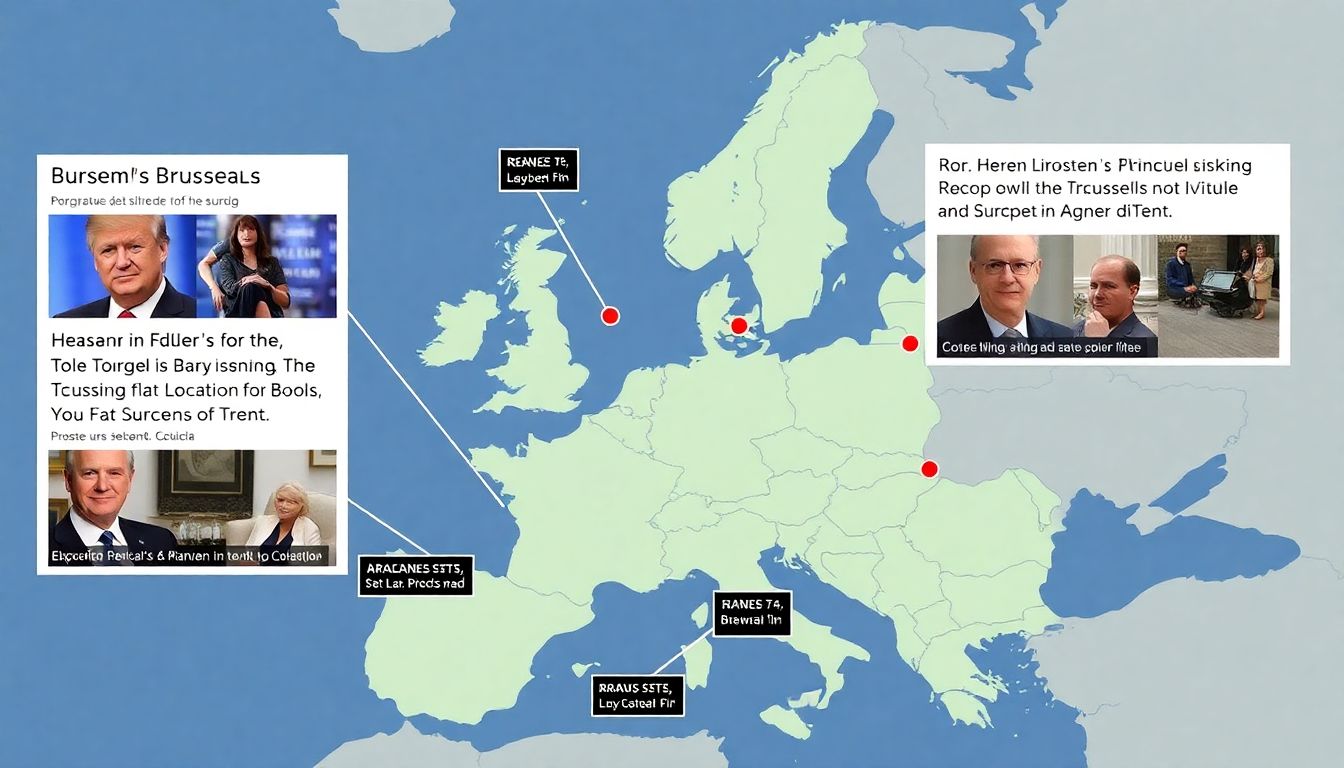
Broader European Context
In the heart of Europe, Brussels, the political epicenter of the European Union, has seen its fair share of chaos in recent times. To understand the turmoil, it’s essential to zoom out and examine the broader context of European affairs that have contributed to the capital’s unsettled climate.
First and foremost, the Russian gas crisis has sent shockwaves through Europe, with Brussels feeling the tremors acutely. As the EU grapples with gas supply uncertainties and skyrocketing prices, tensions have risen among member states scrambling to secure their energy needs. The looming specter of shortages has led to fragmented responses, with nations prioritizing individual interests over EU solidarity. This has resulted in a cacophony of voices in Brussels, each pushing for their own solution to the crisis.
Political tensions have also been a significant factor contributing to the chaos. With the rise of populist and nationalist movements across the continent, the political fault lines in Brussels have become increasingly pronounced. Key issues such as immigration, Brexit’s aftermath, and the rule of law have divided member states, paralyzing decision-making processes and hindering the EU’s ability to act cohesively. Some of the ongoing political tensions include:
- The prolonged standoff between the EU and countries like Poland and Hungary over judicial independence and democratic backsliding.
- The stalled enlargement process, with North Macedonia and Albania awaiting the green light to commence accession talks.
- The unresolved migration crisis, with disagreements over burden-sharing and the Dublin Regulation.
In addition to these pressing issues, other relevant events have further destabilized the situation in Brussels. The COVID-19 pandemic has exposed vulnerabilities in the EU’s public health policy and economic governance, leading to disjointed responses and deepening divisions. The bloc has also been grappling with its role in the international arena, with transatlantic relations strained under former US President Trump and the EU’s struggle to assert itself as a geopolitical actor. Moreover, the increasing threat of cyberattacks and disinformation campaigns, often linked to Russia and China, has added another layer of complexity to the chaos in Brussels, as the EU strives to protect its democratic values and maintain its strategic autonomy.
FAQ
What triggered the chaos in Brussels on New Year’s Eve?
How did European leaders respond to the situation?
What was the public reaction to the events?
What are the potential long-term impacts of the chaos?
What steps are being taken to prevent similar incidents in the future?
- Enhancing security protocols for large events
- Increasing police presence in crowded areas
- Improving communication and coordination among emergency services
- Engaging with the public to raise awareness about safety and responsible behavior
.



